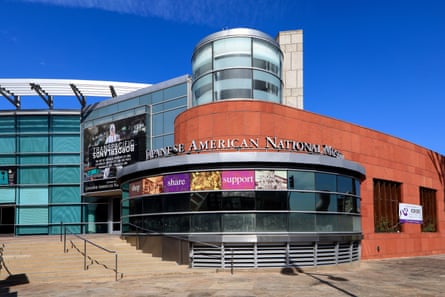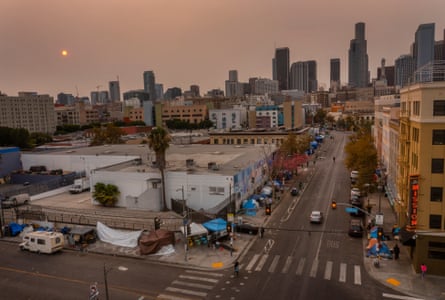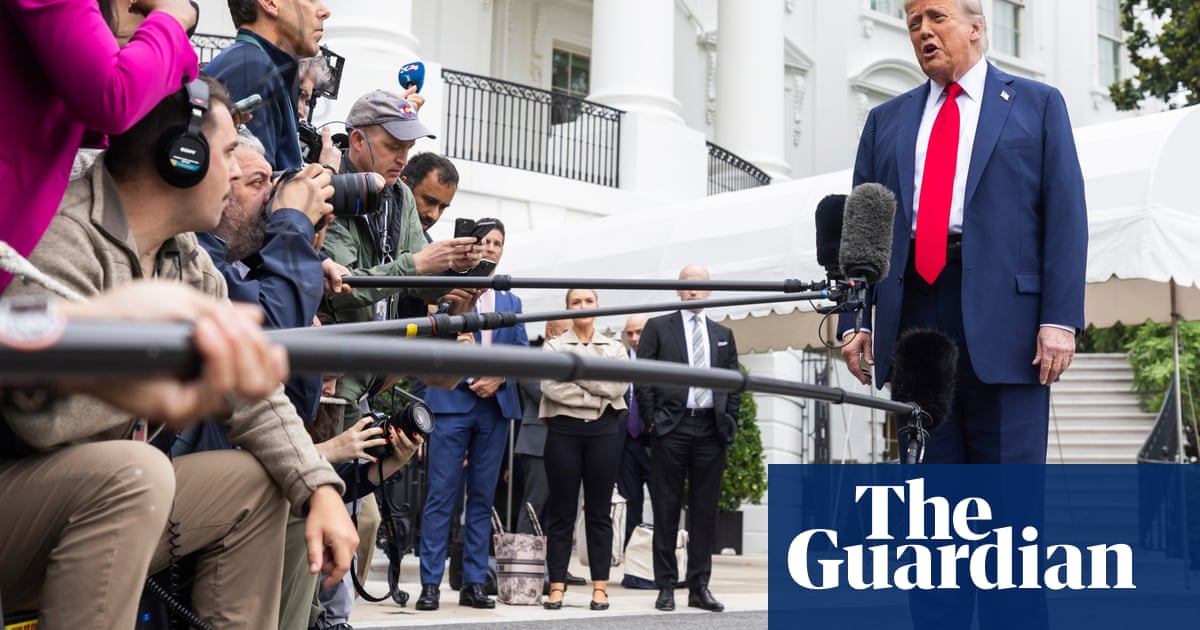For the past two years, a small arts non-profit has been telling stories about the communities living alongside the Los Angeles river, one voice at a time.
The organization, called Clockshop, has collected the oral histories of nearly 70 local residents, activists and elected officials. Their knowledge is compiled in a vast cultural atlas – which contains videos, an interactive map and a self-guided tour exploring the waterway and its transformation from a home for the Indigenous Tongva people to a popular, rapidly gentrifying urban space.
But in April, the future of the ever-growing atlas was thrown in uncertainty, when a three-year federal grant from the Institute of Museum and Library Services (IMLS), the agency that supports libraries, archives and museums, was terminated 17 months early. The grant, originally for $150,000, still had $20,000 left to pay out. “There is no recourse to recover the funds still in the grant project activities,” the organization said in a post on Instagram.
Now, executive director Sue Bell Yank says their mission to preserve the stories of residents ousted by gentrification could lead to “erasure of the past, of cultural self-determination, and a lack of understanding about how communities can successfully advocate for the kinds of neighborhoods we deserve”.
Clockshop’s post foreshadowed an alarming message that would eventually be delivered to hundreds of other arts and cultural institutions across the US. As the Trump administration directed federal agencies to cancel grants that did not support the president’s new priorities, which focused on funding “projects that reflect the nation’s rich artistic heritage and creativity” and targeted anything broadly deemed “DEI” (diversity, equity and inclusion), millions of dollars dedicated to preserving local history and culture suddenly disappeared.
Shortly after IMLS grants were terminated, so too were those awarded by the National Endowment for the Humanities (NEH) and the National Endowment for the Arts (NEA). By Friday 2 May, a spreadsheet created by writer and theater director Annie Doren was being passed around the internet, aiming to catalog every organization that had lost their NEA funding. With more than 500 organizations on the list, the question shifted from who lost their funding to who didn’t.

While organizations of all kinds were impacted, it is the small and midsized institutions that lack endowments, prominent donors, and broad outreach whose futures are particularly in jeopardy. The cuts have affected a broad swath of projects – from a documentary film-maker in Fresno making a film about a woman who has played Harriet Tubman in civil war reenactments for 30 years; to a dance performance about south-east Asian mothers in New York City, to an organization that brings films, book clubs and other cultural events to rural Montana.
Rick Noguchi who runs a non-profit called California Humanities, said he has seen the 112 NEH grants it awarded across the state suspended indefinitely by the Trump administration. “There are many newer immigrant communities that don’t have deep donors and struggle with being able to find individual donors that step in to tell their stories.”
‘The country is abandoning its citizens’
Back in Los Angeles, the cuts have blanketed cultural institutions with feelings of anxiety and urgency. But their leaders are also fighting back, vowing to continue the work of preserving local history in spite of the administration’s threats to revoke non-profit status if they continue to champion DEI programs.
The Japanese American National Museum (JANM), an affiliate of the Smithsonian Institution in LA’s Little Tokyo neighborhood that focuses on the history, culture and legacy of Japanese immigrants, initially lost grants that amounted to roughly $1.45m – though some have since been temporarily restored after a court order. Among those cut was a NEH landmarks of American history and culture grant, which funded a workshop helping teachers build a curriculum about the history of Japanese incarceration during the second world war. JANM CEO Ann Burroughs said that the program benefits approximately 20,000 students a year.
“It was very much to ensure that the history was never forgotten,” Burroughs said about the museum’s mission and outreach. “It was also to ensure that what happened to Japanese Americans never happened to anybody else.”

Los Angeles’s One Institute, which houses the largest queer archive in the world, also uses their collection to help educate others on queer history and marginalization. They lost a $15,000 NEA grant to support their upcoming annual festival in October, and now they are scrambling to hold fundraisers to keep the festival on track.
Tony Valenzuela, the organization’s executive director, said that their event is important because it covers a gap in education. “Even in liberal states like California, only a fraction of students learn about the contributions of queer people to society,” Valenzuela said. “If the government abandons funding non-profits and other individuals and organizations providing a social good, this country will also be abandoning whole swaths of its citizens who greatly benefit from this work.”
Another organization that was hit hard was the Los Angeles Poverty Department (LAPD), which operates the Skid Row History Museum & Archive, located just a few blocks north of the neighborhood in Downtown Los Angeles. They lost four grants administered by IMLS, NEH, and California Humanities, and are unlikely to receive an NEA grant that normally keeps the organization running – a total value of nearly $144,000 dollars, or 22% of the organization’s annual budget.
Like Clockshop, the LAPD’s exhibitions, public programs and archives chart the ways Skid Row has been transformed – and nearly erased – due to development and gentrification. “Not everyone sees Skid Row as a community, let alone a thriving arts community,” said Henry Apodaca, LAPD’s media archivist. “This is a critical counter narrative to popular narratives that we’ve all been inundated with when talking about Skid Row.”

One of the terminated grants was an IMLS grant for small museums, which was being used to support a project called Welcome to the Covid Hotel. The project, named for the temporary medical treatment centers that popped up in vacant hotels during the pandemic to care for unhoused people, culminated in an exhibition and a series of theatrical performances based on interviews with patients, nurses and social workers.
“There’s stories of people coming in blind and getting cataract surgeries,” explains LAPD’s co-founder and artistic director, John Malpede. “Someone with gangrene needed to have his legs amputated, and it saved his life. And most people got and accepted some form of next-step housing.”
Malpede’s performance is a creative way for policymakers to notice the Covid Hotels’ impact and potentially make the sites into permanent fixtures. When the grants were canceled, LAPD was still waiting on more than $38,000 to come through: money that was supposed to pay venues, crew and performers for events that took place in April, as well as upcoming performances in May and June, and a forthcoming publication. While LAPD aims to move forward with their plans, they are uncertain on how to fund it.
After going public on social media, private donors have since stepped up to help the JANM and Clockshop recoup their losses. LAPD and the One Institute, however, are still looking for support. Without this funding, not only could the non-profits disband, but also the communities that have flourished as a result of their work.
As Malpede warns: “It’s only because of the neighborhood standing up and using its own history that it continues to be present.”

 German (DE)
German (DE)  English (US)
English (US)  Spanish (ES)
Spanish (ES)  French (FR)
French (FR)  Hindi (IN)
Hindi (IN)  Italian (IT)
Italian (IT)  Russian (RU)
Russian (RU)  3 weeks ago
3 weeks ago
























Comments